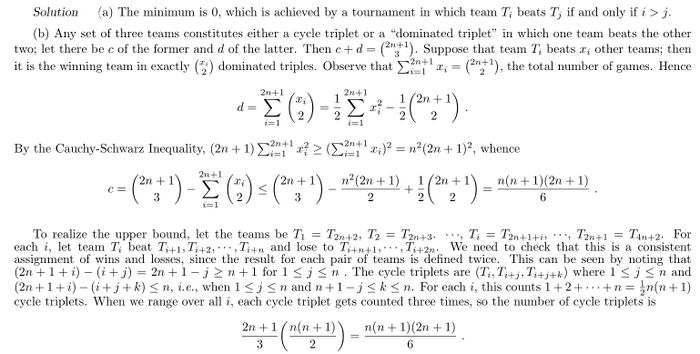Difference between revisions of "2006 Canadian MO Problems/Problem 4"
| (4 intermediate revisions by 2 users not shown) | |||
| Line 6: | Line 6: | ||
(b) Find the maximum number of cycle triplets possible. | (b) Find the maximum number of cycle triplets possible. | ||
==Solution== | ==Solution== | ||
| − | + | ||
| + | |||
| + | [[Image:CMO2006Question4.jpg |700px]] | ||
| + | |||
==See also== | ==See also== | ||
| Line 12: | Line 15: | ||
{{CanadaMO box|year=2006|num-b=3|num-a=5}} | {{CanadaMO box|year=2006|num-b=3|num-a=5}} | ||
| − | |||
| − | |||
| − | |||
| − | |||
Latest revision as of 17:20, 28 November 2023
Problem
Consider a round robin tournament with ![]() teams, where two teams play exactly one match and there are no ties. We say that the teams
teams, where two teams play exactly one match and there are no ties. We say that the teams ![]() ,
, ![]() , and
, and ![]() form a cycle triplet if
form a cycle triplet if ![]() beats
beats ![]() ,
, ![]() beats
beats ![]() , and
, and ![]() beats
beats ![]() .
.
(a) Find the minimum number of cycle triplets possible.
(b) Find the maximum number of cycle triplets possible.
Solution
See also
| 2006 Canadian MO (Problems) | ||
| Preceded by Problem 3 |
1 • 2 • 3 • 4 • 5 | Followed by Problem 5 |










